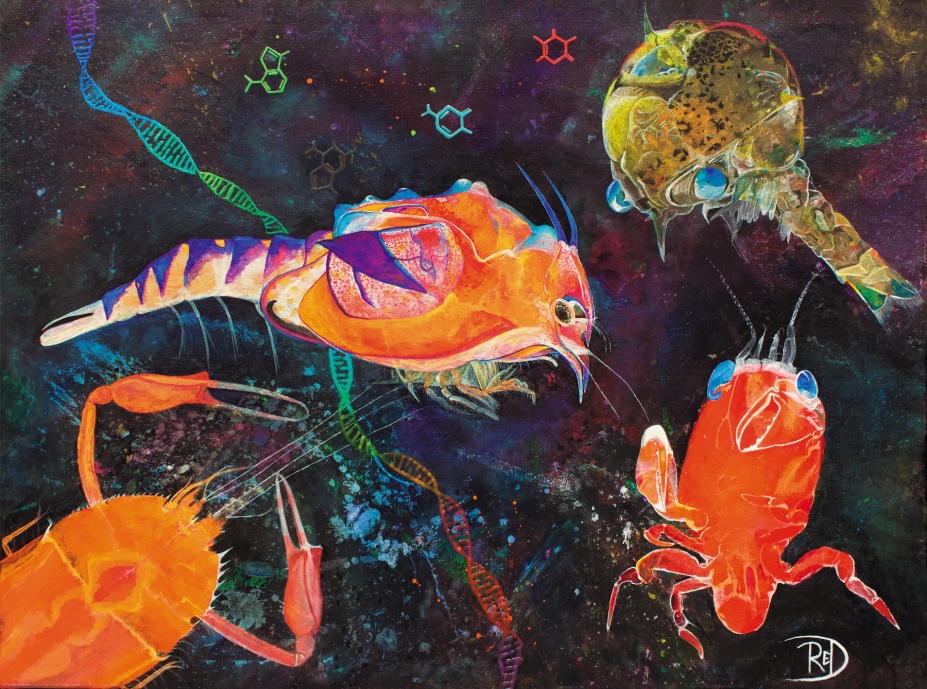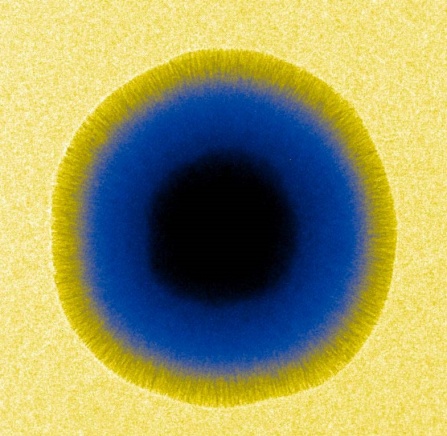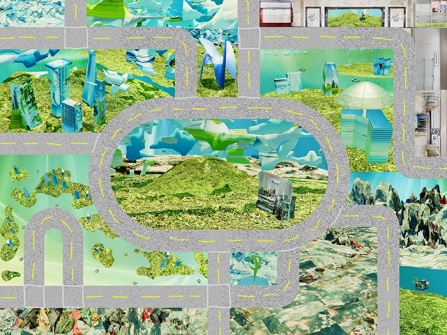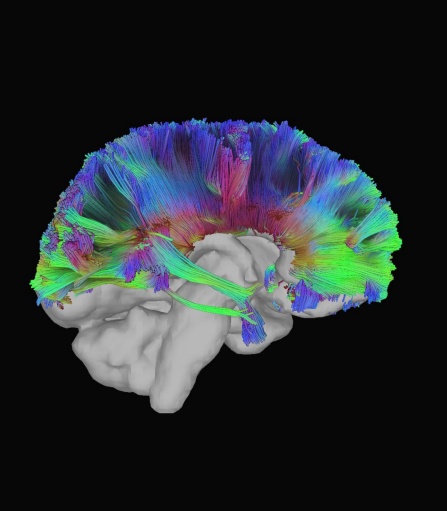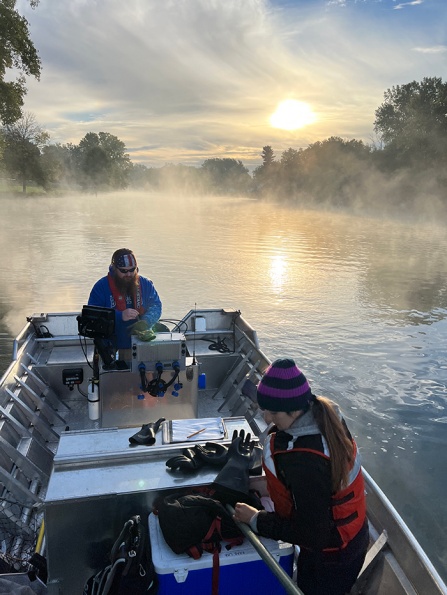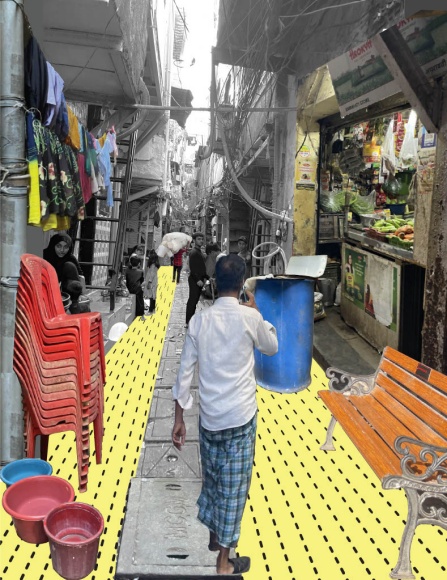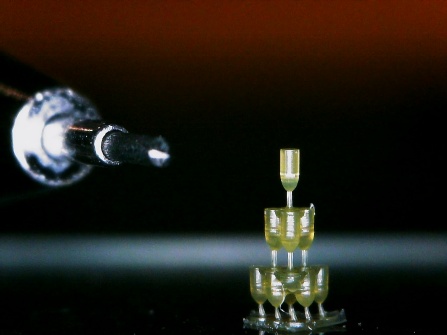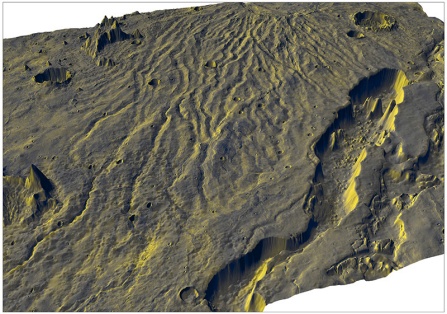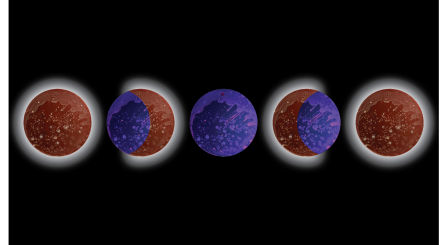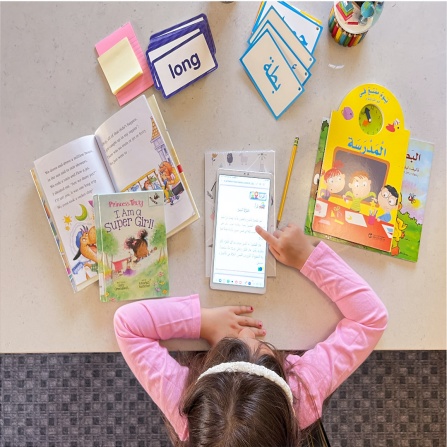2024 Art of Research Winners
Explore the 2024 Art of Research competition winners below. Work is also on display at the Buffalo Museum of Science throughout May.
Monster Larvae
Robert Ditter
Postdoctoral Scholar
Biological Sciences, College of Arts and Sciences
A depiction of deep-sea Decapod larvae that were linked to their adult form through the use of molecular genetics tools (i.e., DNA Barcoding). Until the advent of modern genetics methods, these organisms were commonly referred to as "monster larvae". Now we know that many of the would-be monsters are actually the larval forms of commercially valuable crustacean species.
Best Communication of Research
Magnetic Nano Eye
Damalka Balasuriya
Graduate Student
Chemistry (PhD), College of Arts and Sciences
Explore the world of "Nanoscale," where science and technology delve into the super tiny scale. Imagine a nanometer, so small it's 100,000 times tinier than the width of a human hair. Now, meet the magnetic nano eye, a super tiny nano-sized particle that functions like a perceptive eye in the realm of analytical chemistry, gathering pollutants like an eye captures light. This enables a closer look at our surroundings to unveil hidden secrets of the environment. It possesses a magnetic core and a cover made of silica fibers. The magnetic core, coated in a sleek black hue, spans a mere 300 nanometers in width, imbuing the particle with magnetic power which allows for easy separation of the particles after capturing pollutants from environmental samples. Meanwhile, layers of vibrant blue and luminous yellow representing the fibrous layer span up to 200 nanometers, enhancing the particle's surface area. This enables it to capture and retain pollutants with unparalleled efficiency, allowing the unseen to be seen.
Most Intriguing Composition
Overdrive: The Ecological Impact of Nostalgia and the Marketing of Memory
Jonathan Bolt
Graduate Student
Art (MFA), College of Arts and Sciences
Overdrive: The Ecological Impact of Nostalgia and the Marketing of Memory is a visualization and reflection on the complicated relationship we have to childhood objects that we cherish, and how nostalgia is intertwined in a larger system of marketing tactics and long-term environmental consequences. I specifically focus on the consumption and disposal of toys, drawing from a deep personal attachment to toy cars in my childhood. Experiencing the world through a neurodivergent lens, I saw my college of Hot Wheels cars as an escape from childhood hardships, a world that I can imagine with a narrative all my own. Despite using the world of the object as my escape, I now confront the harsh reality that the objects I cherish are created with crude oil, from the car's paint to the plastic wheels and base. I must take into account that these elements produce material waste in production and shipping, as well as the inevitable time when the toys will be discarded. The degradation of our environment is far more complicated than simply stating we have a problem with consumption. To confront our ecological situation, we must start by taking a look at ourselves. Nostalgia, and our deep yearn for simpler times, is a marketing tactic used to sell us more harmful rubbish, exacerbated by a constant stream of sequels, remasters, and nostalgia-themed brand content. An important step in processing climate change is to think of memory, consumption and nostalgia as something enmeshed in larger environmental issues.
Most Polychromatic
Brain's Blueprint: Mapping the Brain's Connectivity Using Tractography
Elizabeth Castro
Graduate Student
Orthopedics (PhD), Jacobs School of Medicine and Biomedical Sciences
Tractography is a technique used in neuroscience and medical imaging to visualize and map connections in the brain. This technique gives researchers and clinicians a roadmap to understand and investigate the intricate connections between different regions of the brain. These connections, called white matter tracts, can be thought of as the "wiring" of the brain. Tractography analysis allows researchers to estimate the presence of these tracts using magnetic resonance imaging (MRI). These tracts play roles in communication between brain regions, the integration of information, the adaptability of the brain, and many other functions involving movement, memory and learning.
In examining these white matter tracts throughout the brain, many diseases and disorders of the brain can be understood. Specifically, tractography has proven useful in researching traumatic brain injury (TBI). TBI is an injury that often involves white matter tract damage, specifically within the corpus callosum (pictured). This has the potential to cause disturbances to brain functions (mentioned above). Information flow can be diminished, the brain's recovery from TBI can be difficult, and regular learning and memory functioning are affected. However, the different ways in which these injuries present in people make it challenging to find patient-specific methods to treat TBIs. Through the lens of tractography, research aims to unveil the mechanisms and consequences of TBIs, paving the way for improved understanding, treatment and recovery.
Best Live-Action Fieldwork
Gazing through the mist: Surveying for Invasive Species
Sarah Chang
Graduate Student
Biological Sciences (PhD), College of Arts and Sciences
Photo taken at sunrise of scientists conducting fieldwork in Tonawanda Creek. Electrofishing surveys are conducted early in the morning to investigate the occurrence of invasive species in Lake Erie and associated riverways. Water conditions in early fall can lead to warm water temperatures evaporating into the cold early morning air.
Best Layered Visualization
Expanding the Narrow
Viyona Chavan
Graduate Student
Urban and Regional Planning (MS), School of Architecture and Planning
Rooted in my research on Dharavi, India, one of Asia's largest informal settlements, my work sheds light on the remarkable diversity of its residents. Despite facing challenging conditions, the people of Dharavi exhibit a rich tapestry of coexistence, making the most of their surroundings with creativity and resourcefulness.
Picture a slender passage where two people squeeze past each other, yet it morphs into more than just a walkway. It becomes a playground for children, a venue for wedding preparation, a place for water storage, a cozy conversation corner, a spill-out space, and even a modest grocery store. Dharavi's alleys, though physically narrow, unfold stories of resilience, adaptability, and an unwavering sense of community.
The uneven alleyways, with sewer lines running beneath, act as invisible borders between two sides of the street. Paradoxically, these tangible lines symbolize an illusionary divide—a reminder that boundaries are often perceptions rather than realities.
Composed as a digital illustration collage from images captured during my observational field visits, my artwork emphasizes the endless possibilities within seemingly restricted spaces. The message resonates beyond Dharavi, underscoring the universal truth that the size of a space is insignificant when it comes to fostering vibrant life, human connection and perception towards life.
Most Playful Representation of Research
Toast to tomorrow: Cheers to Micro-valve magic
Aditya Chivate
Graduate Student
Industrial and Systems Engineering (PhD), School of Engineering and Applied Sciences
Introducing a groundbreaking marvel of microengineering: the 3D printed micro-valve, smaller than a grain of rice yet mighty in its capabilities. Disguised within the whimsical shape of a champagne flute tower, this tiny wonder harbors a sophisticated multiport selector valve capable of directing matter unidirectionally with unparalleled precision. While its playful exterior may evoke visions of elegant soirées and celebratory toasts, the true magic lies within its intricately designed mechanism.
With the gentle manipulation of this miniature marvel, controlled drug flow becomes not just a possibility but a reality. In the realm of biomedicine, where every drop counts, this micro-valve stands poised to revolutionize drug delivery, ensuring medications reach their intended targets with unparalleled accuracy and efficiency.
Crafted through the cutting-edge art of micro 3D printing, this valve showcases the immense potential of precision engineering on a microscopic scale. So, as we marvel at the whimsical form of the champagne flute tower, let us not be deceived by its playful facade. Within its miniature frame lies a testament to human ingenuity, a symbol of innovation and progress that transcends the boundaries of size and shape. Let us raise a toast to the limitless potential of tiny wonders and the profound impact they hold on our world.
Most Out of This World
A Martian Dreamscape
Katelyn Eaman
Graduate Student
Geological Sciences, College of Arts and Sciences
What comes to mind when you hear geologist? Maybe a khakied individual with a flannel, holding a rock hammer while surveying mountainous lands? Although some of that may still hold true, the vast majority of geoscientists surpass that stereotype. We are modelers. We are coders. We are remote sensing scientists. We are mappers.
A few of us do not even study our home-Earth. As a planetary scientist, I cannot walk upon the ground I study. I cannot feel its surface. I cannot breathe its air. I must rely on distant data. In my research, I investigate ancient channels, carved once by liquid water, on a dormant volcano in the southern highlands of Mars. Using a conglomeration of orbiter satellite imagery and applications in Geographic Information Systems, I map these channels and other erosional surface features along the flanks of Hadriacus Mons.
This is a 3D model of Hadriacus I generated from a blend of multiple digital elevation model data, derived from the Mars Orbiter Laser Altimeter aboard NASA's Mars Global Surveyor spacecraft. It is vertically exaggerated to show the volcano's unique geomorphology. Although, I cannot physically stand in the presence of Mars' rocks, I can dream right?
Most Transformative
Total Molar Eclipse: Blacking out the oral microbiome
Cole Matrishin
Graduate Student
Oral Biology (PhD), School of Dental Medicine
Your mouth contains a subset of over 700 species of bacteria! This image shows the selective growth of some of these bacteria under visible and ultraviolet light. Which helps identify "hidden" aspects of diversity and ecology when it comes to characterizing members of a community, such as the oral microbiome.
Our lab focuses on better understanding the interactions between bacteria and their viral predators, known as "phages", and the role these interactions play in the context of the oral microbiome. A common approach when studying phages is to first isolate and identify their bacterial hosts. The circles shown in this image are pictures of a nutrient agar plate on which bacteria were grown from a donor's dental plaque scrapings. The picture of the red plate was taken under visible light, showing the diversity we can observe with the naked eye. While the purple plate is the same as the red plate but was pictured under a 395 nm ultraviolet light. This revealed fluorescent pink bacteria that were not observable with the naked eye. An observation that can aid in their identification and understanding of their ecological impact that would have otherwise been missed.
This image was created in an aesthetic manner to depict the transition of viewing the bacterial community under visible light into ultraviolet light and back to visible light. Thus, creating the appearance of an "eclipse". Highlighting that, as with many things, there are additional layers to better understanding than what is most easily observable.
Shaping Bilingual Minds: The Power of Family Language Policy in Biliteracy
Azzah Alzahrani
Graduate Student
Learning and Instruction, Graduate School of Education
This photo captures a moment of quiet study, where a young child delves into the world of languages right from their home. This scene, with the girl poised between two linguistic worlds, serves as a powerful metaphor for their balance and integration of multiple cultures and languages in her education. It's a snapshot that represents much more than just a study session; it's a window into the heart of research on Family Language Policy (FLP). The study explores how a family's decision to homeschool in Arabic not only nurtures a child's biliteracy but also weaves a rich tapestry of cultural identity and linguistic skill. By focusing on the daily routines, goals and perspectives of one Arabic-speaking family in the United States. I uncover the profound impact of parental involvement on a child's ability to master two languages. The findings shed light on the intricate dance between teaching and learning, showing how home can be the foundation of lifelong bilingualism. Through this work, I aim to fill a gap in understanding how bilingual families use homeschooling for language and literacy development, offering insights that could guide others on a similar journey.
